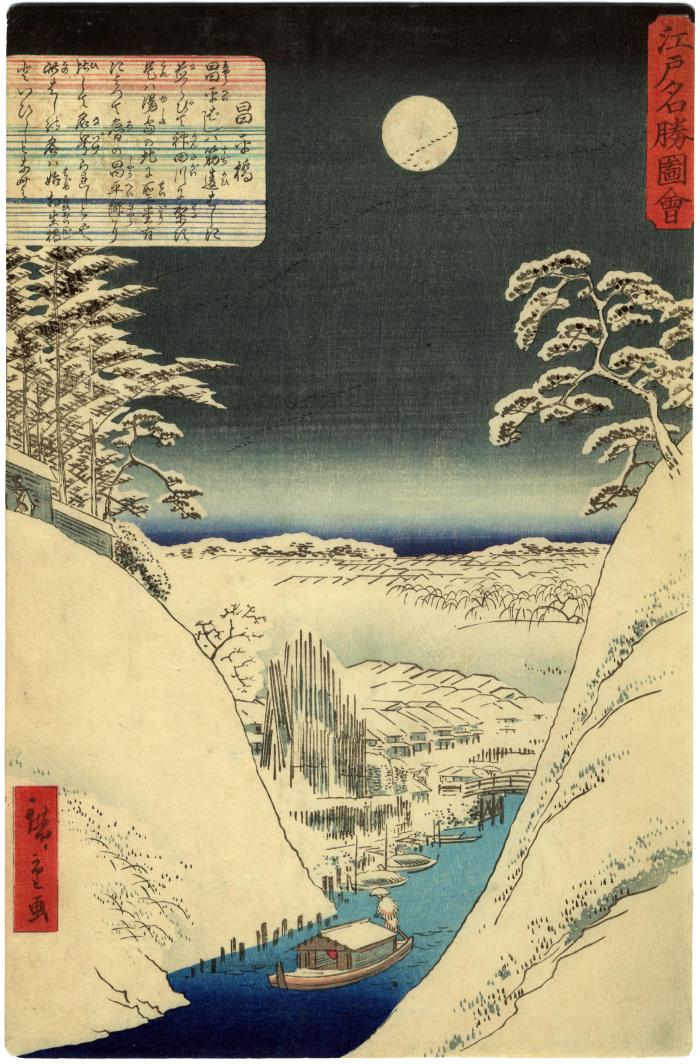Utagawa Hiroshige II (二代目歌川広重) (artist late 1820s - late 1860s)
Shōhei Bridge (Shōhei-bashi - 昌平橋) from the series Views of Famous Places in Edo (Edo meishō zue - 江戸名所図絵)
11/1862
8.5 in x 13 in (Overall dimensions) Japanese woodblock print
Signed: Hiroshige ga (広重画)
Museum of Fine Arts, Boston
Minneapolis Institute of Arts
National Diet Library
Muzeum Sztuki i Techniki Japońskiej Manggha, Krakow
Ruth Chandler Williamson Gallery
Van Gogh Museum
Museum of Fine Arts, Boston - a different Shōhei-bashi perspective by Hiroshige I from 1857
The Museum of Fine Arts, Houston
Honolulu Museum of Art
Berkeley Art Museum and Pacific Film Archive at the University of California According to some sources this print by Hiroshige II (Shigenobu: 1826-69) is the finest example from the series Edo meishō zue. Strong wood grain visible and mica on the bokashi of the night sky.
Notice, using the enlargement tool, the geese flying across the sky, some of which are highlighted by the full moon - a common motif used for centuries by Japanese in art and literature.
This print is trimmed to the image. That means that the date seal for 11/1862 and the publisher's seal for Fujiokaya Keijirō are missing from where the left margin would be.
****
Mikhail Uspensky in his Hiroshige: One Hundred Views of Edo describes the Shōhei Bridge location on page 114 as an area known as the center of Confucianist thought in Edo. He also notes that this bridge was also known as Aioibashi or "the bridge of life (or birth) together" or the Imoaraibashi or "the bridge where potatoes are washed", but its official name Shōheibashi means "the bridge leading to the academy of the Shōheiko" which was located on the right bank of the Kandagawa.
Fujiokaya Keijirō (藤岡屋慶次郎) (publisher)
landscape prints (fūkeiga 風景画) (genre)
kari (wild geese - 雁) (genre)
